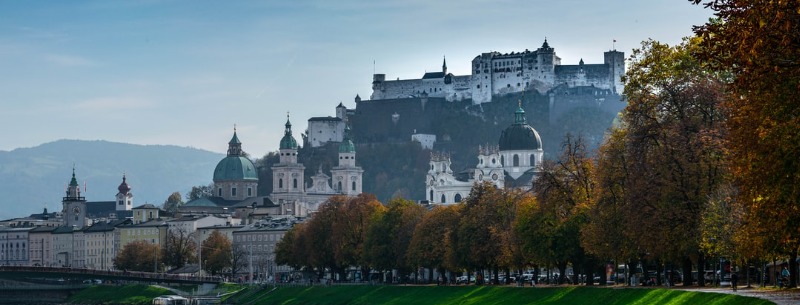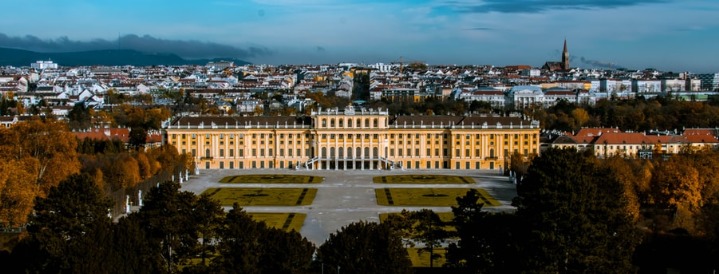2024 Austria Vacation Guide
It’s the spectacular, snowcapped mountains of regions like the Tyrol that provide the most familiar images of Austria – a landscape of jagged peaks and rampaging rivers, giving way to green pastures studded with onion-domed churches. Yet Austria is by no means all alpine vistas: the country stretches across central Europe for some 700km, from the shores of the Bodensee in the west to the edge of the flat Hungarian plain in the east. Far removed from the archetype are the wetlands and reed beds of Burgenland, and the dramatic sequence of stopes that carve their way up the Erzberg in Styria. In Upper and Lower Austria in particular, a predominantly low-key landscape of gently rolling hills and vineyards can come as something of a surprise to first-time visitors. Yet this fertile, low-lying northern half of the country is, in fact, where the majority of Austrians live and work, many of them within commuting distance of the capital, Vienna – the country’s chief tourist destination after the alpine regions.
For all its bucolic charm and fondness for the days of empire, when Vienna sat at the center of the vast, multinational Habsburg dynasty, Austria today is thoroughly modern, clean, efficient, and eminently civilized, with uniformly excellent tourist facilities. Like neighboring Switzerland, it’s also a supremely law-abiding nation, where no one jaywalks or drops litter, and the trains and trams run on time. Whether you’re staying in one of the popular skiing, hiking, or spa resorts, or in an out-of-the-way Gasthof, you’re likely to experience ” Gemütlichkeit ” – a typically Austrian term expressing a mixture of coziness and hospitality – at some point during your visit.
Looking at the country at the close of the twentieth century – stable, conservative, and wealthy – you wouldn’t think that Austria had spent the first half of the century struggling to find a national identity. After all, it was only in 1918, when the Habsburg Empire disintegrated, that the idea of a modern Austrian nation was born. The new republic, with a population of just eight million reluctant citizens, was riven by left- and right-wing political violence, and, as a result, the majority of Austrians were wildly enthusiastic about the Anschluss with Nazi Germany in 1938. The price of Austria’s participation, and ultimately defeat, in World War II, however, was Allied occupation. For ten years the country was split, like Germany, into Soviet, American, British, and French zones. As a gesture of détente, the Soviets finally agreed to withdraw their troops, in return for Austria’s “permanent neutrality”. At this point, Austria turned over a new leaf, and recast itself as a model of consensus politics, with an almost Scandinavian emphasis on social policy as the guiding principle of national life. Postwar stability saw the growth of genuine patriotism, while the end of the Cold War put the country, and its capital, back at the heart of Europe.
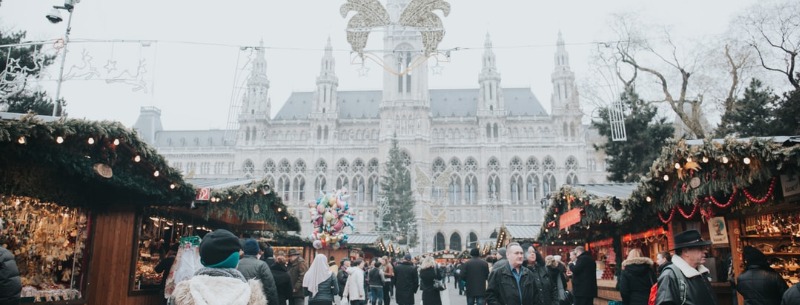
In 1995, Austria became a full member of the European Union, a move that for many was a sign that the country had finally entered the mainstream of European politics. From time to time, Austria’s more reactionary elements have attracted widespread media attention, most notably during the Waldheim affair, when the wartime record of the president was called into question, and in the recent rise of the Far-Right under the charismatic Jörg Haider. But the reality is that the Socialist party retains the strongest influence in government, as it has for much of the postwar period, and the country’s political stability, for the most part, continues intact.
Vienna
Most people visit Vienna with a vivid image of the city in their minds: a monumental vision of Habsburg palaces, trotting white horses, old ladies in fur coats, and mountains of fat cream cakes. And they’re unlikely to be disappointed, for the city positively feeds off imperial nostalgia – High Baroque churches and aristocratic mansions pepper the Innere Stadt, monumental projects from the late nineteenth-century line the Ringstrasse, and postcards of the Emperor Franz-Josef and his beautiful wife Elisabeth still sell by the sackful. Just as compelling as the old Habsburg stand-bys are the wonderful Jugendstil and early Modernist buildings, products of the era of Freud, Klimt, Schiele, Mahler, and Schönberg, when the city’s famous coffeehouses were filled with intellectuals from every corner of the empire. Without a doubt, this was Vienna’s golden age, after which all declined: with the end of the empire in 1918, the city was reduced from a metropolis of over two million, the capital of a vast empire of fifty million, to one of barely more than 1.5 million and the federal capital of a small country of just eight million souls.
Given the city’s twentieth-century history, it’s hardly surprising that the Viennese are as keen as anyone to continue plugging the good old days. The visual scars from this turbulent history are comparatively light – even Hitler’s sinister wartime Flacktürme (anti-aircraft towers) are confined to the suburbs – through the destruction of the city’s enormous Jewish community, the driving force behind the city’s fin-de-siècle culture is a wound that has proved harder to heal. The city has struggled since to live up to the glorious achievements of its past and has failed to shake off a reputation for xenophobia. Yet for all its problems, Vienna is still an inspiring city to visit, with one of the world’s greatest art collections in the Kunsthistorisches Museum, world-class orchestras, and superb architectural heritage. It’s also an eminently civilized place, clean, safe (for the most part) and peopled by citizens who do their best to live up to their reputation for Gemütlichkeit, or “coziness”. And despite its aging population, it’s also a city with a lively nightlife, with plenty of late-opening Musikcafés and drinking holes. Even Vienna’s restaurants, long famous for quantity over quality, have discovered more innovative ways of cooking and are now supplemented by a wide range of ethnic restaurants.
Most first-time visitors spend the majority of their time in Vienna’s central district, the Innere Stadt. Retaining much of its labyrinthine street layout, it’s the city’s main commercial district, packed with shops, cafés, and restaurants. The chief sight here is the Stephansdom, Vienna’s finest Gothic edifice, standing at the district’s pedestrianized center. Tucked into the southwest corner of the Innere Stadt is the Hofburg , the former imperial palace and seat of the Habsburgs, now housing a whole host of museums, the best of which is the Schatzkammer, home to the crown jewels.
The old fortifications enclosing the Innere Stadt were torn down in 1857, and over the next three decades gradually replaced by a showpiece, a boulevard called the Ringstrasse . Nowadays, the Ringstrasse is used and abused by cars and buses as a ring road, though it’s still punctuated with the most grandiose public buildings of late-imperial Vienna, one of which is home to the city’s new cultural center, the Museumsquartier , and another of which houses the famous Kunsthistorisches Museum. Beyond the Ringstrasse lie Vienna’s seven Vorstädte , or inner suburbs, whose outer boundary is marked by the traffic-clogged Gürtel (literally “belt”), or ring road. The highlight out here is the Belvedere , where you can see a wealth of paintings by Austria’s pre-eminent trio of modern artists – Egon Schiele, Gustav Klimt, and Oskar Kokoschka – followed by the Prater, east of the Danube Canal, with its famous Ferris wheel and funfair. On the whole, there’s little reason to venture beyond the Gürtel into the Vororte, or outer suburbs, except to visit Schönbrunn, the Habsburgs’ former summer residence, a masterpiece of Rococo excess and an absolute must if only for the wonderful gardens.
Hallstatt, a Wonderful Town in Austria
When you visit Austria, you can certainly be amazed by its beautiful nature and amazing cities. One of these amazing cities is Hallstatt. This city is situated on the banks of the lake, where you can take astonishing photos. Hallstatt is home to the first salt mine in the world. Besides visiting different attractions, in the winter season, this place is perfect for skiing.
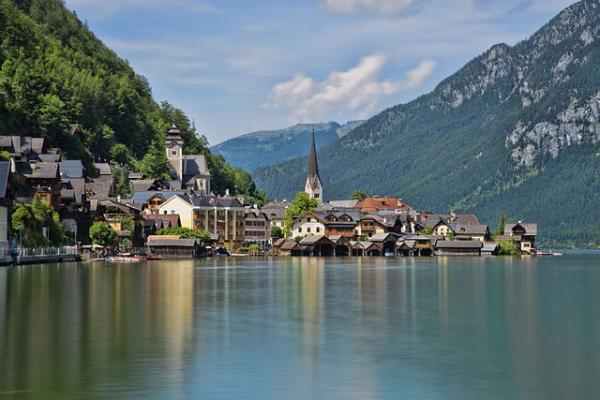
Thousands of visitors are coming every year to this beautiful town. Even if Hallstatt is a small town, you will find beautiful attractions and a multitude of restaurants and hotels here. This city is very famous for its Iron Age culture and is a World Heritage Site. Besides iron, salt is another thing that makes Hallstatt historically rich. The image is that in this city the production of salt started in 1595 and was transported over 45 kilometers from Hallstatt to Ebensee through a pipe.
When you come here, you will have the opportunity to see the world’s oldest pipeline. It was built over 350 years, from 12,000 hollowed trees. When you see this impressive pipeline, you will certainly want to see the salt mine, another interesting attraction.
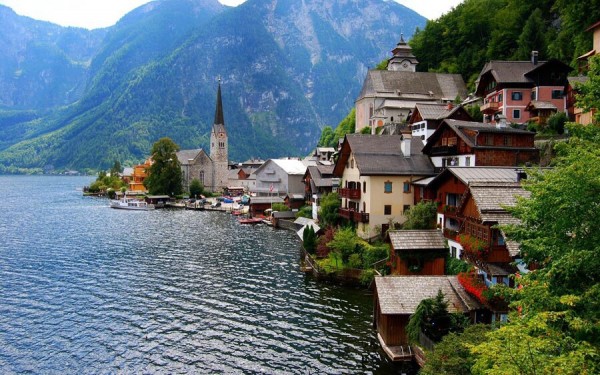
Hallstatt is a place where you certainly not get bored. Coming here with your family can be a great idea, as this is a nice and relaxing place to spend a vacation. Places like the chapel or the blacksmith site that was first excavated in the city, are locations that you need to see. Hallstatt has such a strong culture and many lovely places that will teach you their interesting history.
Salt is a major factor in the economic life of Hallstatt. This interesting fact actually makes Hallstatt a curious destination for many visitors who want to discover a beautiful history. Have you ever been to Hallstatt?
